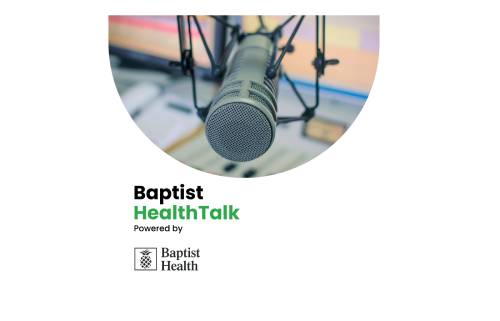
Science
From Stroke Patient to Stroke Survivor: Fast Action Saves Islamorada Man's Life
4 min. read
Baptist Health Miami Neuroscience Institute
It only took a few seconds for a typical day in August to turn into a life-threatening emergency for Urbano Matos. The 57-year-old handyman was working on some kitchen cabinets in Islamorada when he dropped his phone. The fumble was the beginning of a cascade of troublesome events. “I started slurring words. I fell over. My left side was numb and I couldn’t get up,” Mr. Matos recalls.
Fortunately, his friend recognized the signs of a stroke and paramedics quickly responded. After a 22-minute air ambulance ride, Mr. Matos arrived at Baptist Health Baptist Hospital Emergency Center, where he was whisked off to have a minimally invasive procedure to remove the clot that was stopping the blood supply to his brain.
Mr. Matos was also fortunate that Baptist Hospital is always prepared to receive stroke victims and other emergency cases via air ambulance and had moved its helipad directly above the hospital's emergency department, shaving precious minutes off his journey. “With significant philanthropic support from the community, we were able to transition our ground helipad to the rooftop of the Victor E. Clarke Emergency Center on the Baptist Hospital campus,” said Alex Villoch, chief executive officer, Baptist Health Foundation. “We extend our gratitude to our generous donors who helped make this possible.”
(Watch now: After suffering a stroke while on the job in Islamorada, Urbano Matos was whisked to Baptist Hospital where doctors removed a clot stopping blood supply to his brain—before it could cause lasting damage. Video by Alcyene Almeida Rodrigues.)
Time is critical
“In an acute stroke, an artery in the brain gets blocked or occluded, typically from a clot. It’s a medical emergency,” explains Italo Linfante, M.D., director of interventional neuroradiology and endovascular neurosurgery at Miami Neuroscience Institute and Miami Cardiac & Vascular Institute, both part of Baptist Health. “Outcomes in these patients is very poor without intervention.”
Approximately 800,000 people in the U.S. have a stroke each year and every three minutes and 17 seconds someone dies of a stroke, according to the U.S. Centers for Disease Control and Prevention (CDC). A stroke can be caused by a clot (an ischemic stroke) or by a weakening of an artery that then bursts (a hemorrhagic stroke). There are also mini-strokes, known as transient ischemic attacks, or TIAs. Time is of the essence no matter the cause.
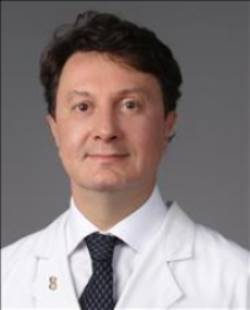
Italo Linfante, M.D., director of interventional neuroradiology and endovascular neurosurgery at Miami Neuroscience Institute and Miami Cardiac & Vascular Institute, both part of Baptist Health
Comprehensive Stroke Center
Dr. Linfante is part of a Baptist Health team that has a Comprehensive Stroke Center designation from The Joint Commission, which accredits U.S. healthcare organizations. The program is also ranked in the top 10 percent in the nation for stroke care by U.S. News & World Report. Comprehensive Stroke Centers have specialists on-site 24/7 and meet strict time requirements for getting patients from the ER to the angiography suite. In addition, studies show that high-volume centers such as Baptist Health’s have the best patient outcomes.
Mr. Matos underwent a mechanical thrombectomy, a minimally invasive procedure performed by Dr. Linfante. “We access the femoral artery and navigate a small wire into the arteries to reach the clot,” Dr. Linfante says. “We pass a catheter through the clot and deploy a device that looks like a stent.” Doctors are then able to pull the clot out of the artery to restore blood flow.
A new person
A day later, Monroe County flight nurse Obed Bello, who also happens to be a nurse manager on the neuro and cardiac unit at Baptist Hospital, visited his patient. “I didn’t even recognize him,” he says. “He was talking to me, looking at me. No neural deficits. And he just seemed like a brand new person.”
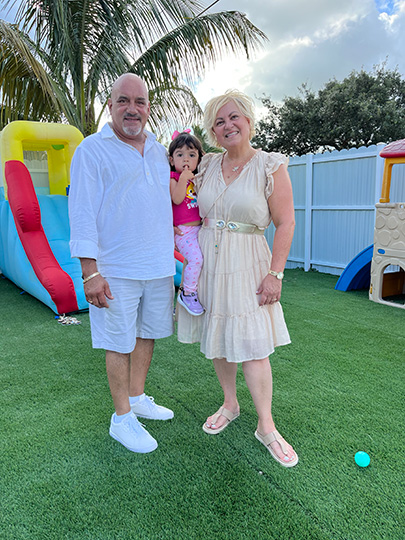
Mr. Matos realizes just how lucky he is to be alive to play with his four granddaughters. “If it wasn’t for the helicopter and I had been driven up to Miami, I probably wouldn’t be here today,” he says. “The Baptist Hospital staff? They’re amazing. The staff, the doctors, everybody. It was awesome.”
Stroke risk factors and symptoms
Although Mr. Matos was at high risk for a stroke, he wasn’t completely aware of the dangers. He was a lifelong smoker and drinker and was on medication for high blood pressure. “I have not smoked a cigarette or had a beer since that day,” he says. “It’s an opportunity. I have a longer time to share with my wife, my kids and my grandkids.”
In addition to smoking, excessive alcohol use and high blood pressure, risk factors include obesity, heart disease, diabetes, high cholesterol and leading a sedentary lifestyle.
It’s also important to recognize the symptoms of a stroke quickly because every minute a stroke continues, more than a million neurons in the brain can be damaged, Dr. Linfante says. Know the F.A.S.T. signs: Face drooping, Arm weakness, Speech slurred and Time to call 911. Less common symptoms include sudden dizziness, double vision, swallowing problems and lack of coordination.
Dr. Linfante and other physicians at Miami Neuroscience Institute are also leading clinical trials that will hopefully lead to more breakthroughs in the treatment of stroke.
Meanwhile, he is pleased to see that Mr. Matos has no disabilities from his stroke. “The procedure was successful and he did extremely well,” he says. “His future is good.”
Healthcare that Cares
Related Stories
View All Articles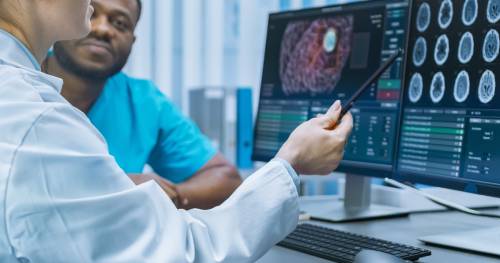
Baptist Health, FIU’s Herbert Wertheim College of Medicine Partner in New Clinical Trial That Could Revolutionize Care for Alzheimer’s Patients
March 28, 2024
2 min. read
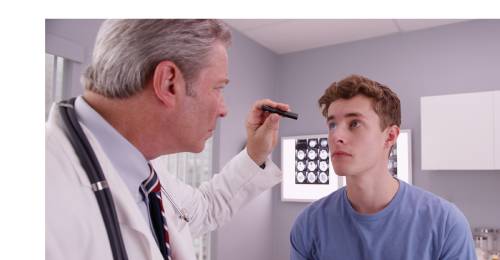
Brain Injury Awareness: Understanding Immediate and Long-Term Neurological Effects
March 27, 2024
3 min. read
